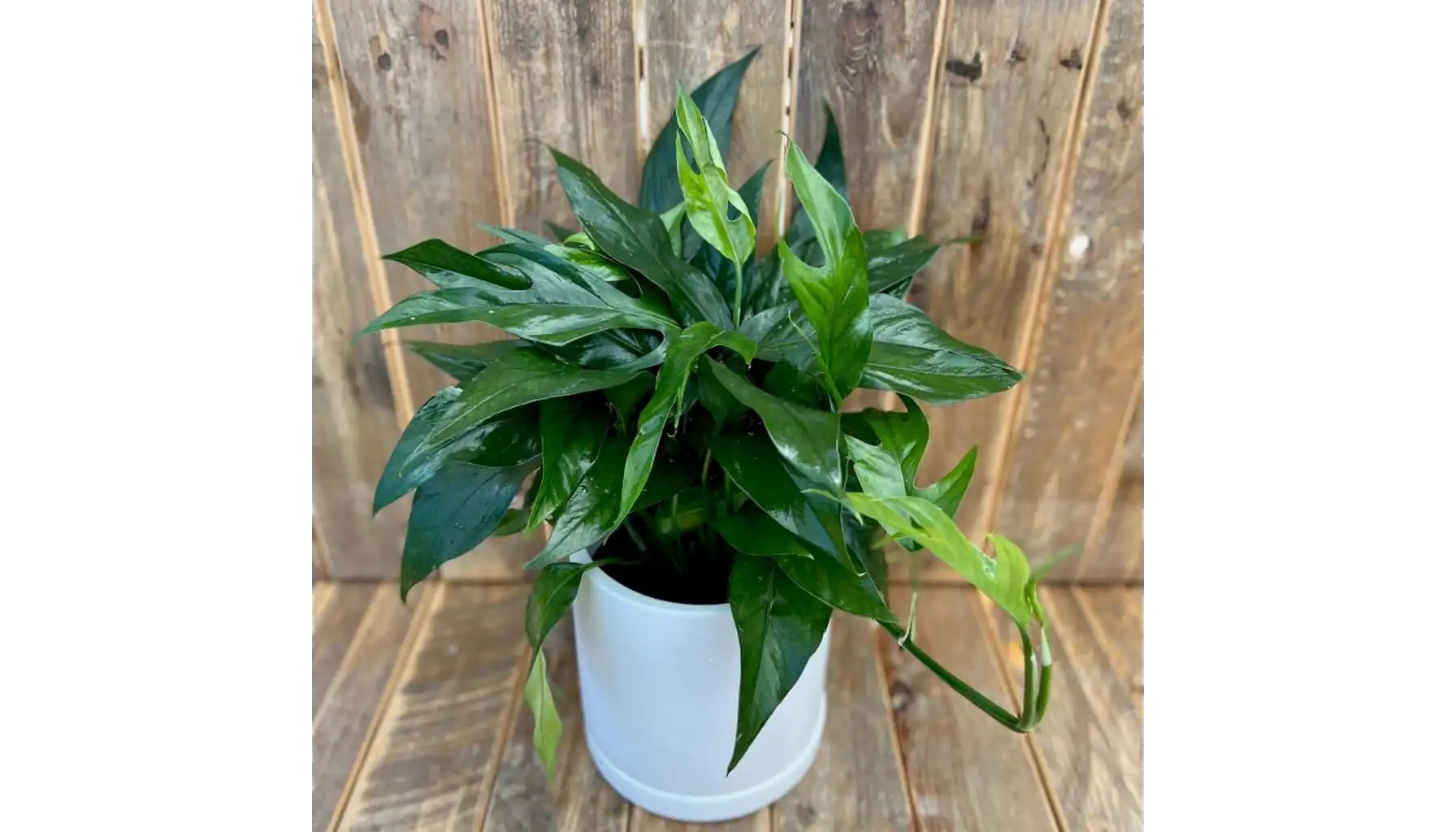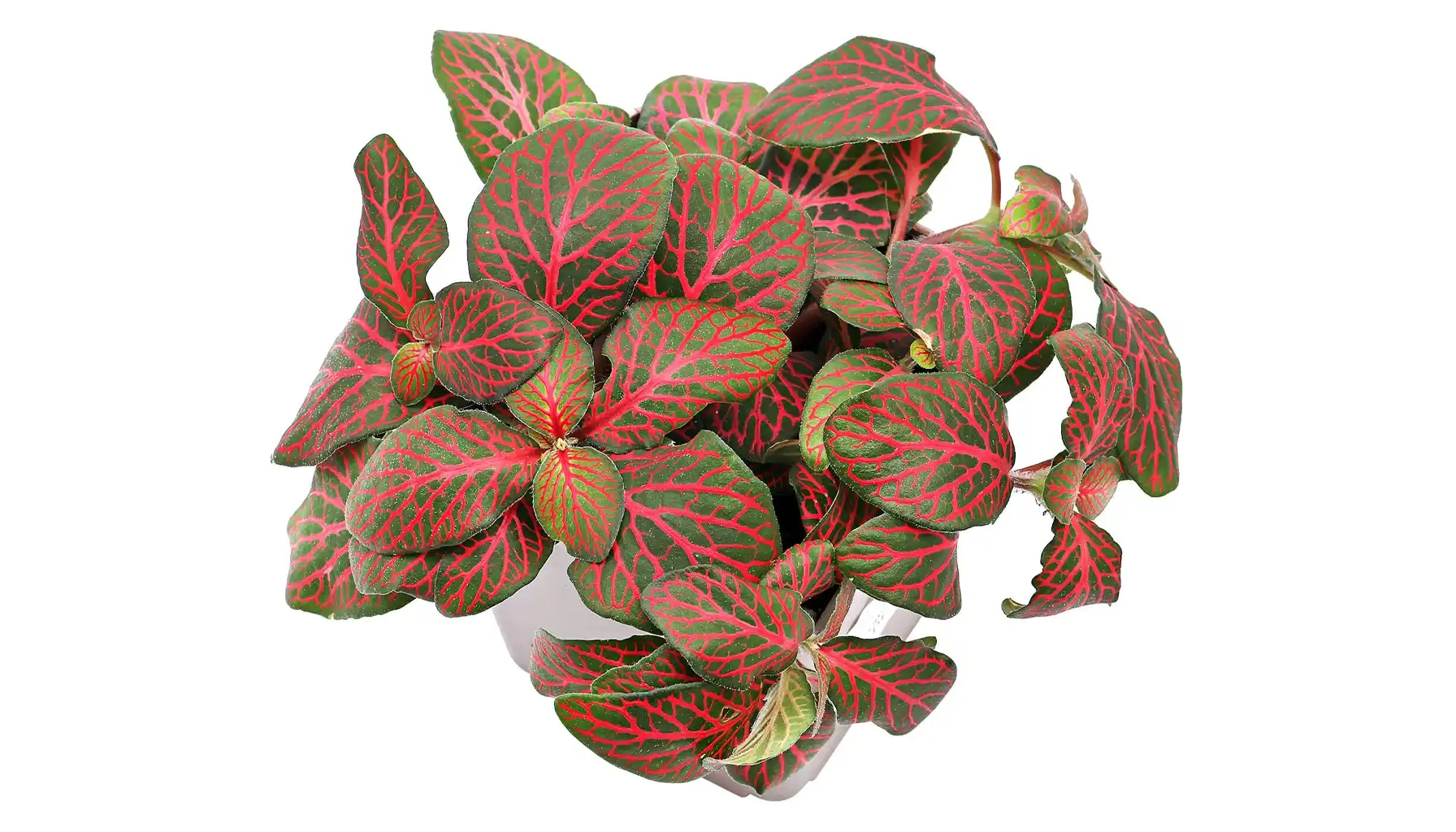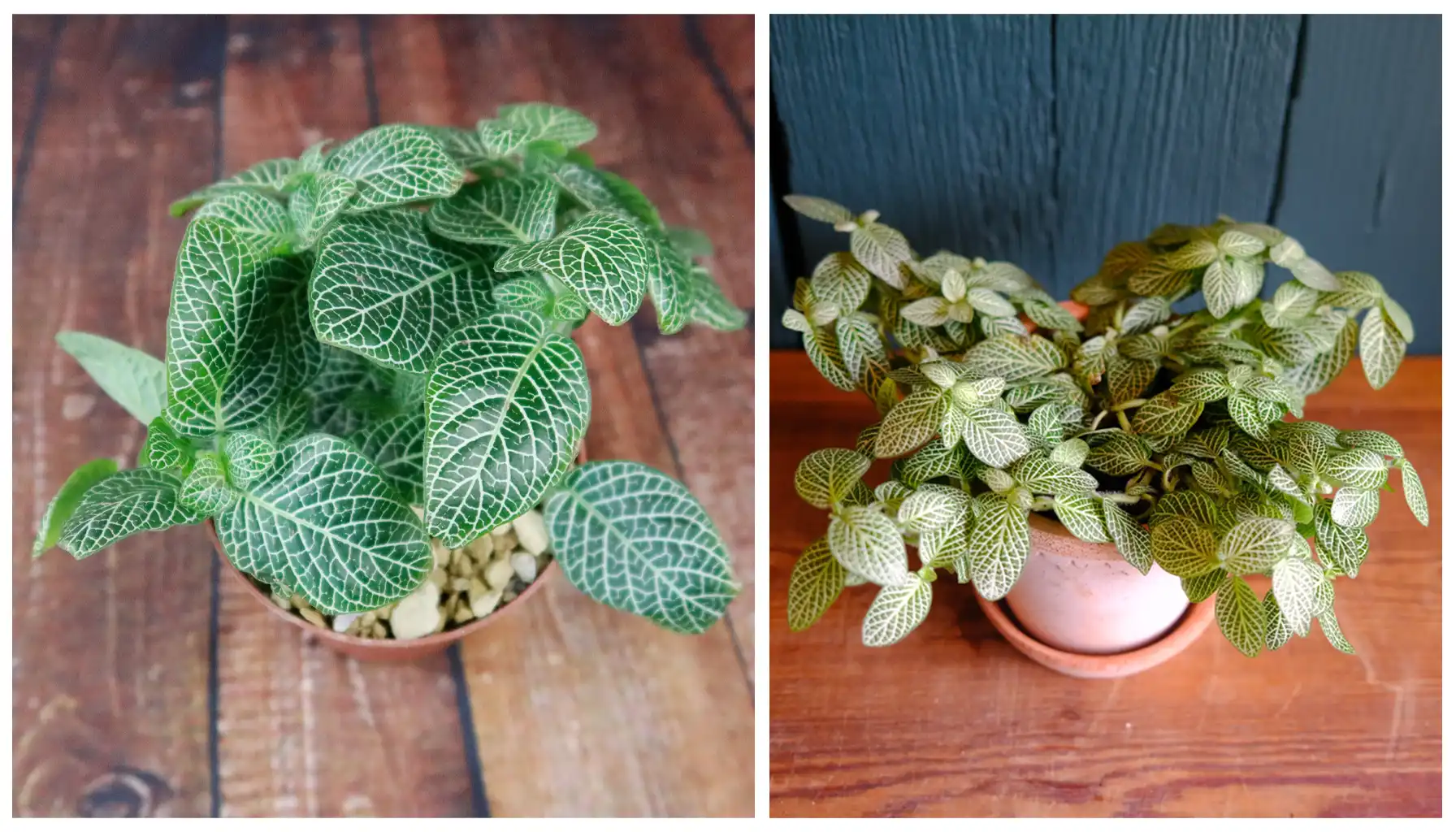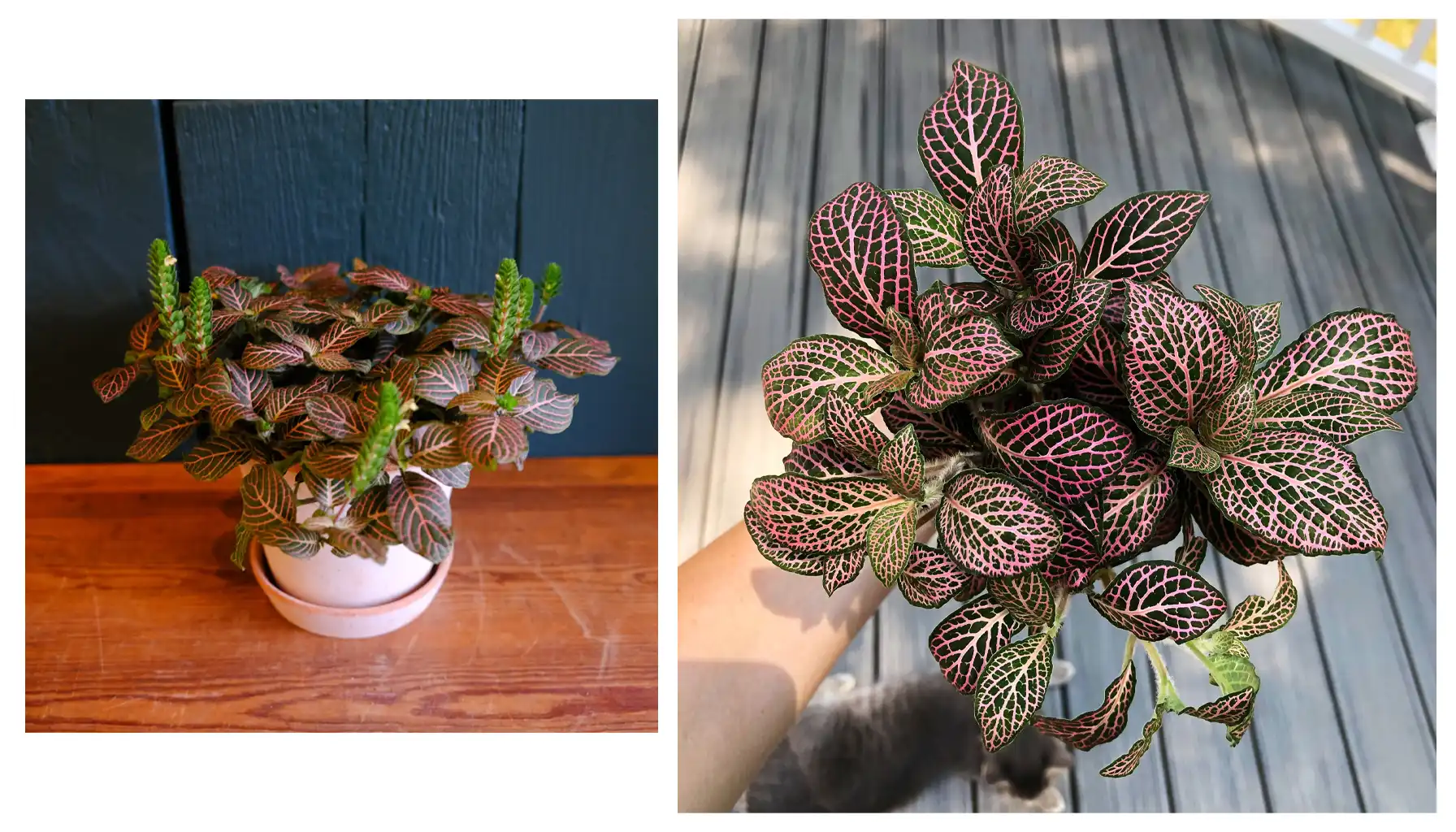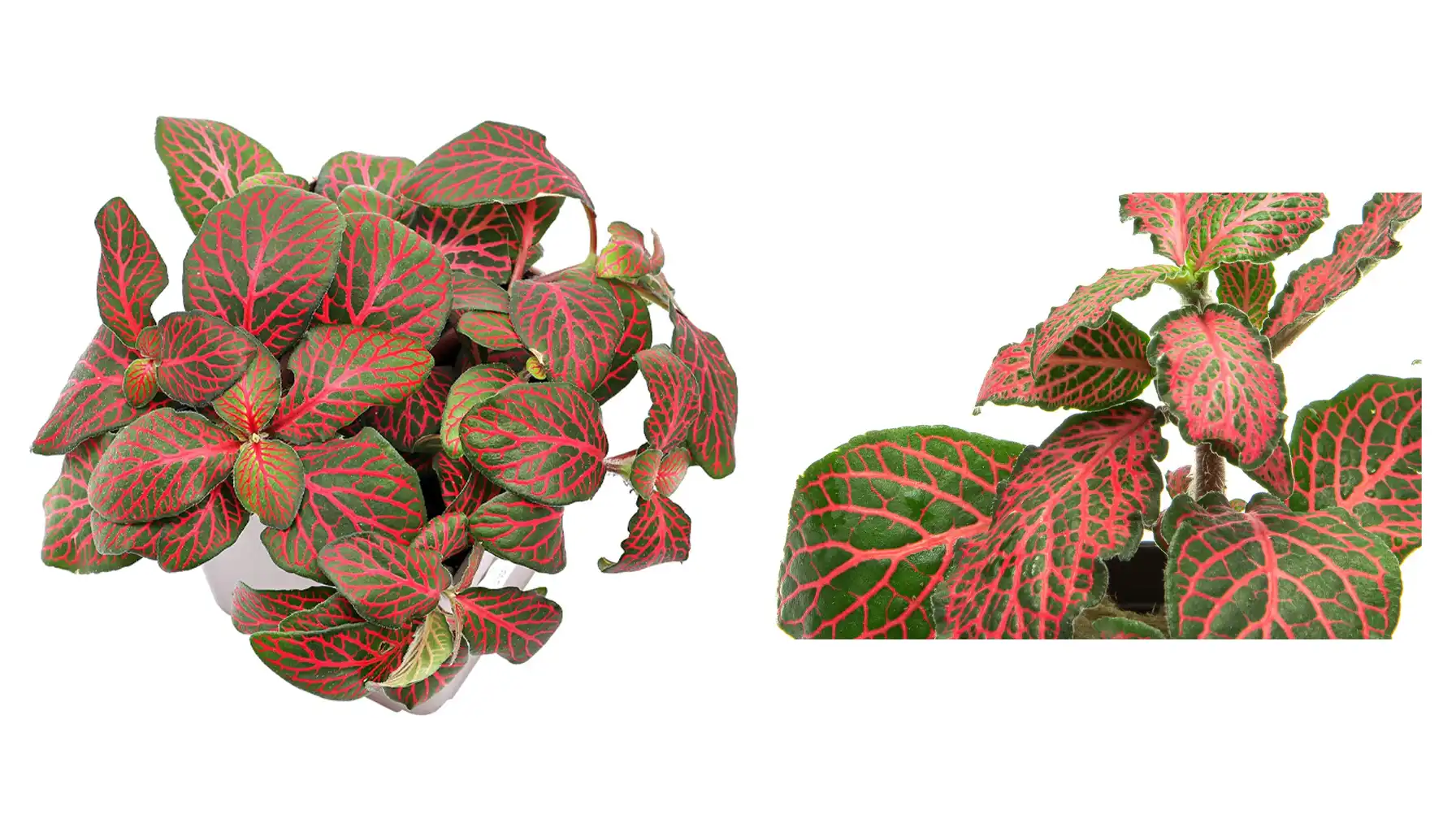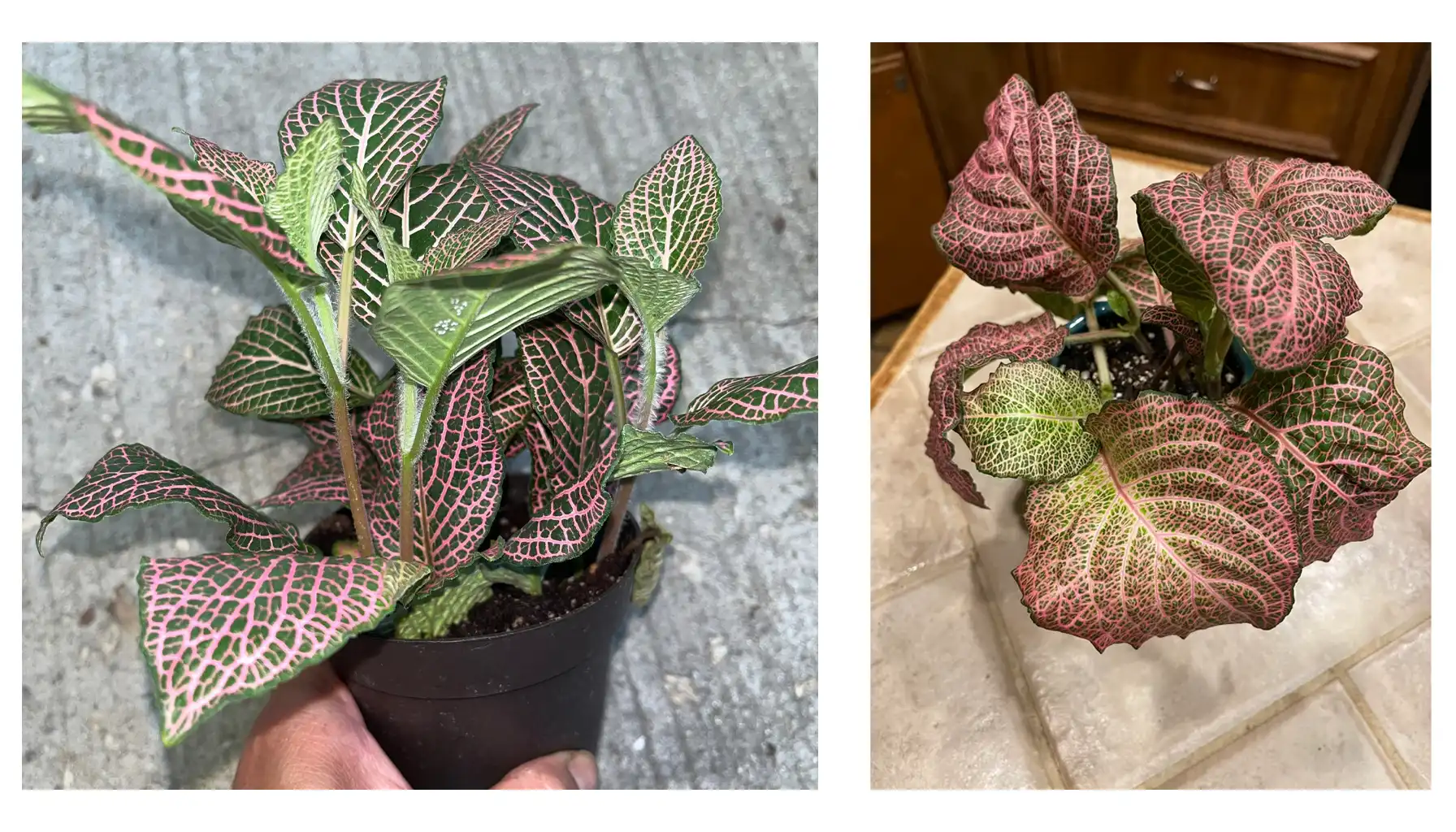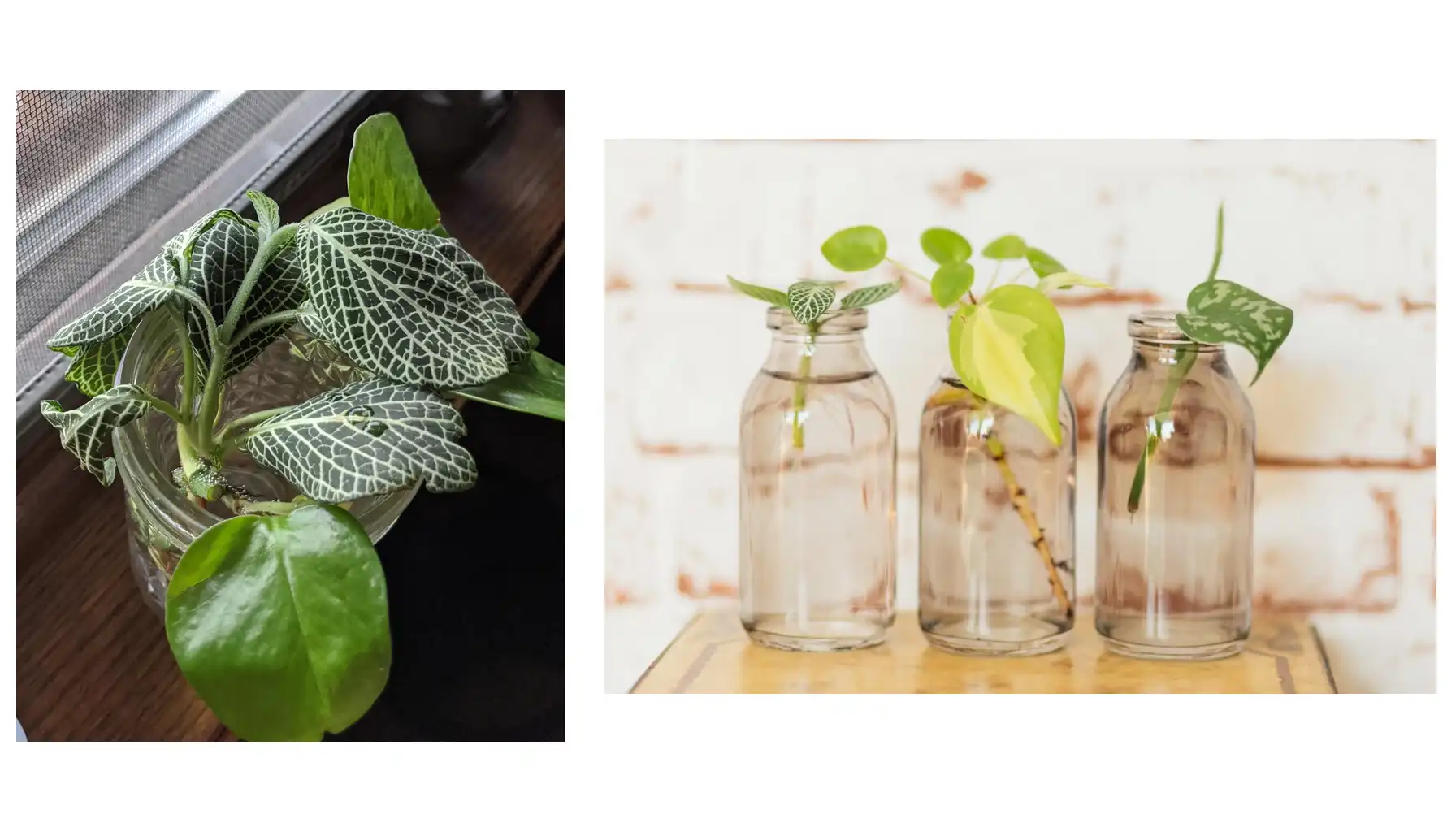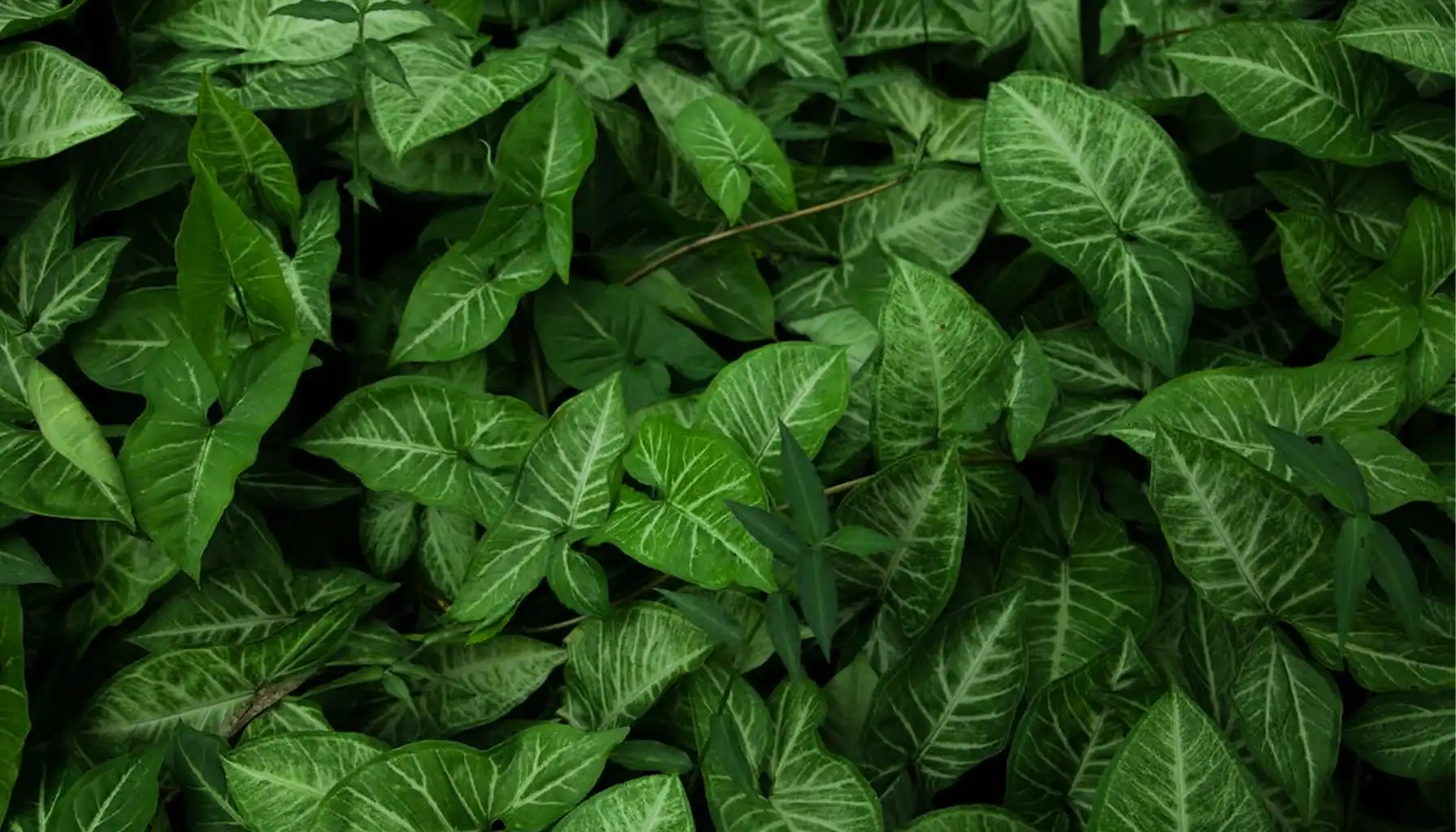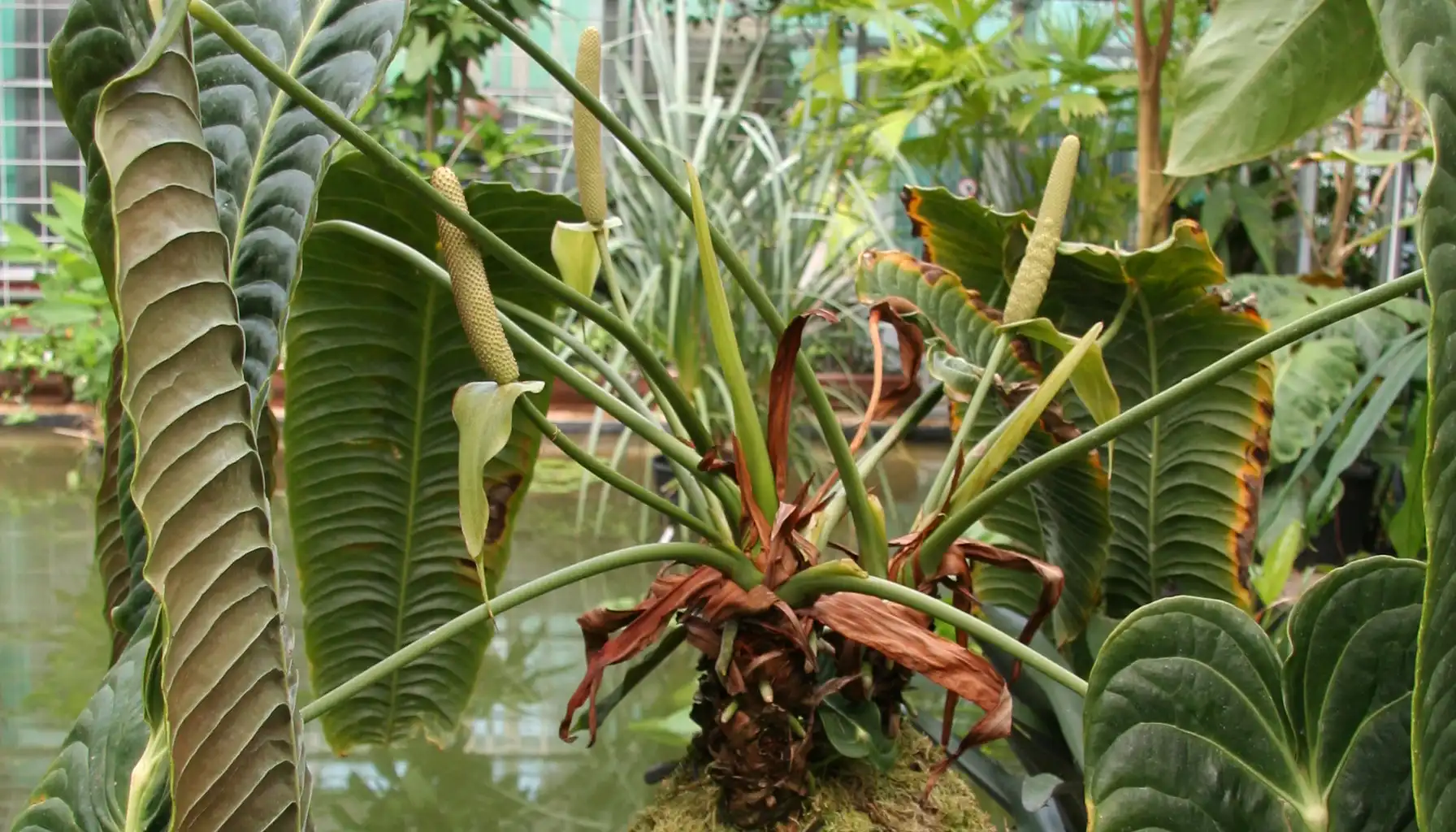Fittonia is a pretty little plant, but it is finicky when it comes to care. In order to make this green buddy grow and not waste away, you should do some research. And we’ll provide you with all the information.
This article will teach you about the needs of Fittonia and what common varieties you can find.
What flower is this growing near your house? There’s now an app that can identify it.
About Fittonia
Fittonia is commonly known as Nerve plant or Mosaic plant, all because of the peculiar pattern on its leaves. This flora came from the tropics and was prized for its vividly veined leaves.
Fittonia plant spiritual meaning varies, but commonly it symbolizes vulnerability and adaptability, like Cacti. Most likely because just like cacti, this flora can be revived even when it wilts.
Overview of Fittonia (nerve plant) |
Feature | Details |
Origin | South America, Peru |
Type | Low-growing evergreen |
Size | 3 to 6 inches (7–15 cm) |
Life span | Typically, several years with proper care |
Leaf Colors | Deep green. Veins on leaves have varied colours |
Flowers | Tiny, spike-like flowers (usually white) |
Propagation | By stem cutting |
Toxicity | Not toxic |
Special Features | Very sensitive to light and drought |
Fittonia Varieties
If you’re looking for a Fittonia plant photo, you’ll probably notice that many of them have different colours. Indeed, Fittonia has several popular varieties, mostly derived from Fittonia albivenis.
Each variety is distinguished by the color and vein pattern on leaves. Here are some well-known Fittonia varieties:
White Fittonia Plant
It is the most common variety, mostly represented by Fittonia albivenis. It is known for its white colour on the leaves’ veins.
Other popular white subvarieties are
Fittonia White Anne. Has a classic look with crisp white veins on green leaves.
Fittonia Skeleton. Has prominent, sharp white veining with deep green foliage.
Pink Fittonia Plant
This variety commonly features pink patterns on leaves. Fittonia pink nerve plant is always eye-catching and stands out in a crowd. Some common subvarieties are:
Fittonia Pink Angel. Has soft pink veins on lush green leaves. A gentle ornamental plant.
Fittonia Pink Star. Features bolder pink tones with smaller, compact leaves.
Red Fittonia Plant
This variety has the most intense colour. It won’t fit into every interior, but when it fits, it gets all the attention. Some of the popular subvarieties are:
Fittonia Red Anne. Has bright red veins on dark green leaves.
Fittonia Red Star. Compared to Red Anne, it has an even more intense red veining. Leaves feature less to no green colour.
If you’re browsing for the Red Fittonia plant image, you’ll see that the coloration differs a bit, from coral to vivid red. The more sun the leaves get, the redder they turn.
Juanita Fittonia Plant
This popular variety combines red and pink Fittonia Nerve plant colours. Depending on light exposure, it goes from light pink to red. The leaves themselves are usually light green.
Juanita Fittonia plant care is tricky, just like with other varieties, but our guide will apply to all varieties.
Fittonia Plant Care
This flora is not exceptionally hard to grow, but it also doesn't fit into the top 10 easiest to grow indoor plants. Light and watering are the trickiest parts, but when you get the hang of them, this flora becomes manageable.
Light Requirements
Ideally, you should provide bright, indirect light. If you put this flora directly under the window, it will soon be scorched.
While this flora tolerates low light, its leaf color may fade. Especially if it’s red or pink.
Watering Requirements
There are two ways you water this flora.
Keep soil consistently moist, but not soggy, and water it about once a week. On the plus side, this flora will never wilt, but on the downside, it may develop root rot if you accidentally overwater it.
Experienced gardeners sometimes let this flora wilt a bit, and then water it. This flora wilts dramatically, but it usually recovers quickly after watering (similar to Tradescantia).
Use room-temperature water to water this flora.
Temperature Requirements
This plant prefers temperatures between 65–80°F (18–27°C), which should not be a surprise considering that it originates from warm climates.
At temperatures below 50°F (10°C), this flora may easily die, so always keep it indoors.
Soil and Fertilizer Requirements
Fittonia nerve plant care in terms of soil and fertilizing is not picky. This flora doesn't need specific soil or fertilizer.
For soil, you can use a well-draining potting mix, ideally peat-based.
For fertilizer, use a diluted liquid fertilizer. Remember that you should fertilize this flora only in growing seasons like spring and summer.
Where to Buy Fittonia Plant
This flora is popular among gardeners and traders, so you should have no problems buying a sprout. Here are two ways you can buy Nerve plant Fittonia:
Buy it offline. Most plant nurseries and houseplant shops carry Fittonia, especially in the spring and summer. Just check your local market and buy a sprout. Usually, you can find one in the indoor and/or tropical section.
Buy Fittonia Plant online. You’ll find more buying opportunities, but pay attention to the shipping and check the reviews of the customers.
Propagation Guide
Fittonia is very easy to propagate, especially using stem cuttings. It’s a method where you cut a part of the stem, you nurture it, and with time, it begins rooting and becomes a standalone sapling.
Stem cutting is a very common method, used for Coleus and other shrub-type flora. Spring or summer (the time of the active growing season) is the ideal time to start propagation.
Choose a healthy stem with at least 2–3 leaves. One of these leaves will turn into roots.
Cut below a node (the point where a leaf joins the stem). You will need clean scissors or pruning shears.
Remove lower leaves, leaving just a few at the top. The upper leaves will provide energy, and the lower ones will turn into roots.
Insert the stem cutting into a moist potting mix.
Keep the soil consistently moist, not soggy.
Cover with a plastic bag or dome to retain humidity.
Place in indirect light and open the plastic dome daily for a few minutes. It lets the sapling “breathe”, preventing rot.
Roots should develop in about 2–3 weeks. Once they appear, you know that you successfully did propagation.
Fittonia Plant Benefits
Not every shrub is useful, but this one can bring beauty and health into your house. If you want to know more about its benefits, check the table below.
Benefit | Description |
Aesthetic Appeal | This flora has striking foliage with colorful veins. It adds beauty to any indoor space. It can also be used as a tailing plant. |
Air Purification (Mild) | It may help clean indoor air by absorbing small pollutants and releasing oxygen. |
Compact and Low-Maintenance | Grows well in small spaces, therefore suitable for desks, terrariums, and apartments. The Fittonia hanging plant uses mostly vertical space, making it very compact. |
Humidity Booster | Helps maintain humidity in terrariums or grouped plant settings. |
Mental Health Benefits | Caring for plants reduces stress, improves focus, and promotes relaxation. |
Fittonia Nerve plant image will spice up your interior and make your room more livable.
Toxicity and Safety
Is the Fittonia plant toxic to cats and other pets?
It is safe! According to the ASPCA (American Society for the Prevention of Cruelty to Animals), this flora is non-toxic to cats, dogs, and other common pets. It means you can safely put this flora at home.
AI Plant Finder
AI Plant Finder is a mobile flora identification and care app.
Users take or upload a photo of a plant, and the app uses algorithms to identify it and offer care tips, disease diagnosis, pest alerts, and reminders.
If you consider yourself a devoted gardener, the app also offers learning opportunities via blogs and care guides.
AI Plant Finder is free to download on iOS and Android devices. Anyone can try it.
Related AI Plant Finder Posts
